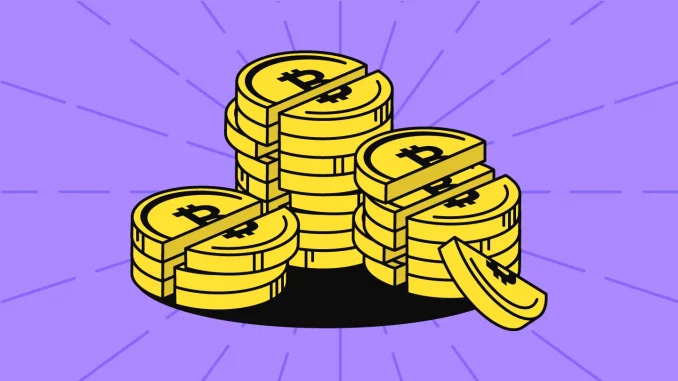
The **halving** is a calamitous event that is hardcoded into the DNA of Bitcoin every four years. This moment, in which the reward for mining new blocks is reduced by half, is not solely a supply-side constraint. It is a psychological disturbance to the markets, a stimulant for speculation, and a test of the long-term sustainability of Bitcoin.
The block reward was reduced from 6.25 BTC to 3.125 BTC in the most recent halving, which took place in **April 2024**. As history has shown, significant price fluctuations, infrastructure shifts, and fluctuations in investor sentiment frequently precede halvings.
Nevertheless, what is the long-term outlook? Where will Bitcoin be in 2029, five years after the most recent halving?
We should investigate the prospective outcomes, which encompass both positive and negative scenarios.
🧠 at first, the significance of the halving
The halving of Bitcoin is not merely a ruse; it is a crucial element of its **monetary policy**.
* The entire supply of Bitcoin is restricted to 21 million. The scarcity is further exacerbated by the reduction of new supply by half. In the past, this has led to price appreciation, particularly after the 2012, 2016, and 2020 halvings, which all initiated substantial bull markets.
The long-term sustainability and network security of the network are at risk due to the fact that the incentives of miners are diminishing as block rewards decrease.
Scenario 1: Bitcoin surpasses $500,000
**The Advantage: The Globalization of Digital Gold**
In this scenario, Bitcoin remains a globally recognized, deflationary store of value, known as **digital gold**. Potential significant variables include the following:
* **Macroeconomic instability**: Inflation, banking crises, and de-dollarization necessitate that investors pursue real assets.
* **Institutional adoption**: BTC is integrated into the balance statements of Fortune 500 corporations, sovereign wealth funds, and pension funds.
* **Legal clarity**: The regulation of Bitcoin holding and transacting is transparent in key economies.
* **Lightning Network maturity**: The availability of immediate, low-cost payments renders BTC viable for microtransactions.
Bitcoin may: by 2029
* Trade between **$250,000 and $500,000**.
* Be attended by **more than one billion individuals**.
* Serve as a **reserve asset** for a multitude of countries.
* Be primarily mined through effective operations that utilize **renewable energy**.
**What is the benefit?** Bitcoin establishes the basis of the post-fiat economy.
🌘 Scenario 2: Bitcoin reaches a level of approximately $30,000–$50,000.
**The Neutral Case: A Store of Value, but No Moonshot**
In this context, Bitcoin achieves **mainstream respectability**; however, it does not undergo unprecedented growth. The following are some of the factors:
* **Institutional caution**: The extent of widespread adoption is restricted by compliance risks.
* **Better alternatives emerge**: Stablecoins, CBDCs, or Ethereum satisfy daily transactional needs.
* **Technological bottlenecks**: Layer-2 adoption is stagnant, and on-chain scaling remains a concern.
* **The implementation of volatility** for deposits and payments in developing nations is discouraged.
Bitcoin continues to be a valuable **portfolio hedge**; however, it is not a transformative force. It is the **digital equivalent of a Swiss bank account**—secure, yet unremarkable.
In Scenario 3, the value of Bitcoin decreases to less than $10,000.
**The Bearish Case: The Momentum is Stopped by Apathy, Technology, or Regulation**
Bitcoin’s relevance is diminishing due to the following, according to a more pessimistic perspective:
* **Aggressive global regulation** leads to possession and utilization that are either complex or illegal in critical regions.
**Security risks**: A effective exploit or systemic failure can jeopardize public trust.
* **Environmental backlash**: The use of energy renders mining politically unsustainable.
* **Evolving narratives**: Investors are becoming more interested in blockchains that are more efficient and scalable, as well as in real-world tokenization platforms.
Bitcoin has the capacity to:
* Reduce to less than **\$10,000**. Be primarily employed as a **legacy curiosity** rather than a live financial tool.
* Address the **centralization of mining**, community fragmentation, and variations.
🛠 What is anticipated? Mixed Reality
The truth may be located between two extremes. Within the next five years:
* It is anticipated that Bitcoin will remain the **largest decentralized crypto asset** in terms of market capitalization. It is possible that it will not be the primary currency in transactions; however, it will continue to function as a **digital savings account**, particularly in regions with weak fiat currencies. Infrastructure will expand; however, the rate of adoption will be determined by perception, regulation, and scaling.
Expect a **consolidated market** in which BTC fulfills a similar role to gold: not at a swift pace, but profoundly.
🧮 A Speculative Forecast of Bitcoin in 2029, Complete with Numbers
The metric is conservatively estimated, while the optimistic scenario is optimistic.
BTC price per unit $50,000 to $150,000 $250,000–$500,000 or more
Global holders: 500 million+ 1 billion+
Institutional ownership Moderate High block reward: 1.5625 BTC The same (2028 halving)
Global LATAM, Africa, Asia Major adoption regions
🧭Conclusion: The Halving Is Only the Beginning
Bitcoin’s legacy will be determined by the events of the next five years, despite the fact that the 2024 halving may have been another key moment. Is it possible for it to transition from a speculative asset to a critical financial instrument? Is it capable of expanding? Will the global community embrace or deny it?
**Bitcoin does not guarantee stability; rather, it guarantees sovereignty.** In an era of economic uncertainty and technological disruption, that may be its most lasting value.
**What is your prediction for Bitcoin in 2029? “Meltdown, moon, or middle ground?” Kindly share your thoughts in the comments section below. **
Leave a Reply